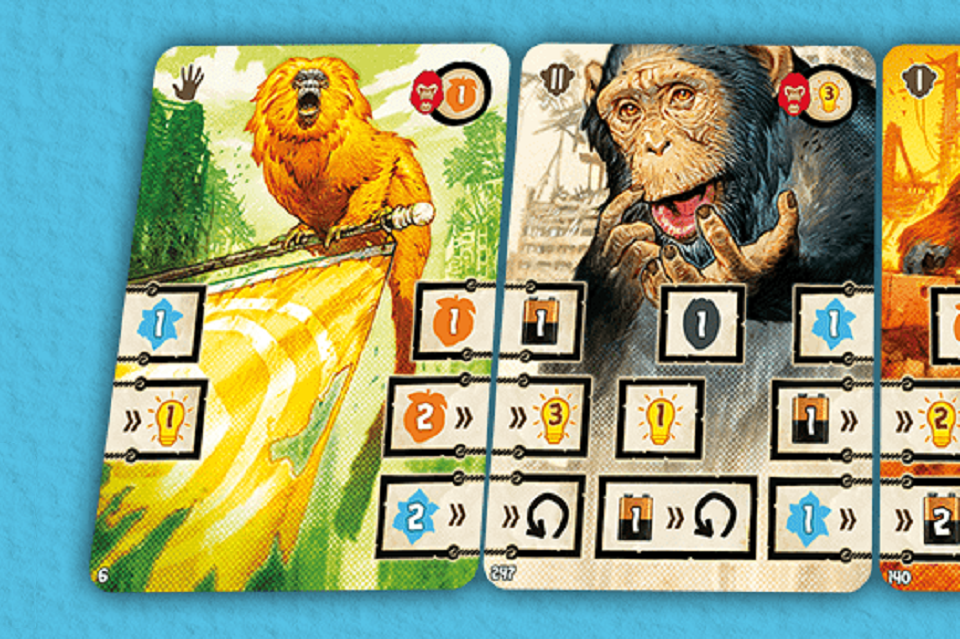
In After Us, the year is 2083. Humanity has been inexplicably extinct for several decades.
In this abandoned world, the apes gradually evolve. They join together in hordes and learn to use the items that humans have left behind.
As leaders of each of these hordes, it is your responsibility to lead your fellow primates on the path to collective intelligence. To make sure you are well prepared for this task, we present the five most important elements of Florian Sirieix’s connoisseur game After Us in this game guide by PegasusSpiele:
An original deck building game
After Us is a deck-building game at its core, but it has distinct differences from the classics of the genre. First, let’s take a look at the row activation system: In After Us you’ll play your cards simultaneously and have to match them up in the best possible way.
To do this, each round you place four cards next to each other in a row and try to complete boxes, which you are then allowed to activate from left to right and from top to bottom.
The first row generates resources, the second row is about victory points (which are represented here by little light bulbs – your horde gets a light, so to speak) and the third row is about the special abilities of your primates. The order of these lines is anything but random.
Activating a box often requires resources, and you’ll need to have your cards lined up correctly to collect exactly the resources you need so you can spend them afterwards.
But every decision you make can also mean that you have to give up something else – and in a game of After Us, you make these decisions anew every turn, both when laying out your cards and when activating the boxes on them.
Another original facet of After Us is the hidden market. When you buy a new card for your deck, you never know exactly what you’re going to get. But that is also not necessary.
It is enough to know what role the card will play in your deck. The cards are divided among four primate families, each with its specialty: mandrills score more victory points, orangutans bring you batteries (which allow you to use special items), gorillas increase your wrath (allowing you to remove unwanted cards from your deck), and chimpanzees allow you to activate boxes on your cards multiple times.
So if your choice falls on the appropriate primate species, that determines your overall strategy. This system of face-down cards allows for simultaneous play, as you can recruit the primate species you want at the same time, without one person being able to “snatch” a supposedly good card away from another. However, which primates you will recruit will be determined by the resources you have available. So let’s take a look at the resources.
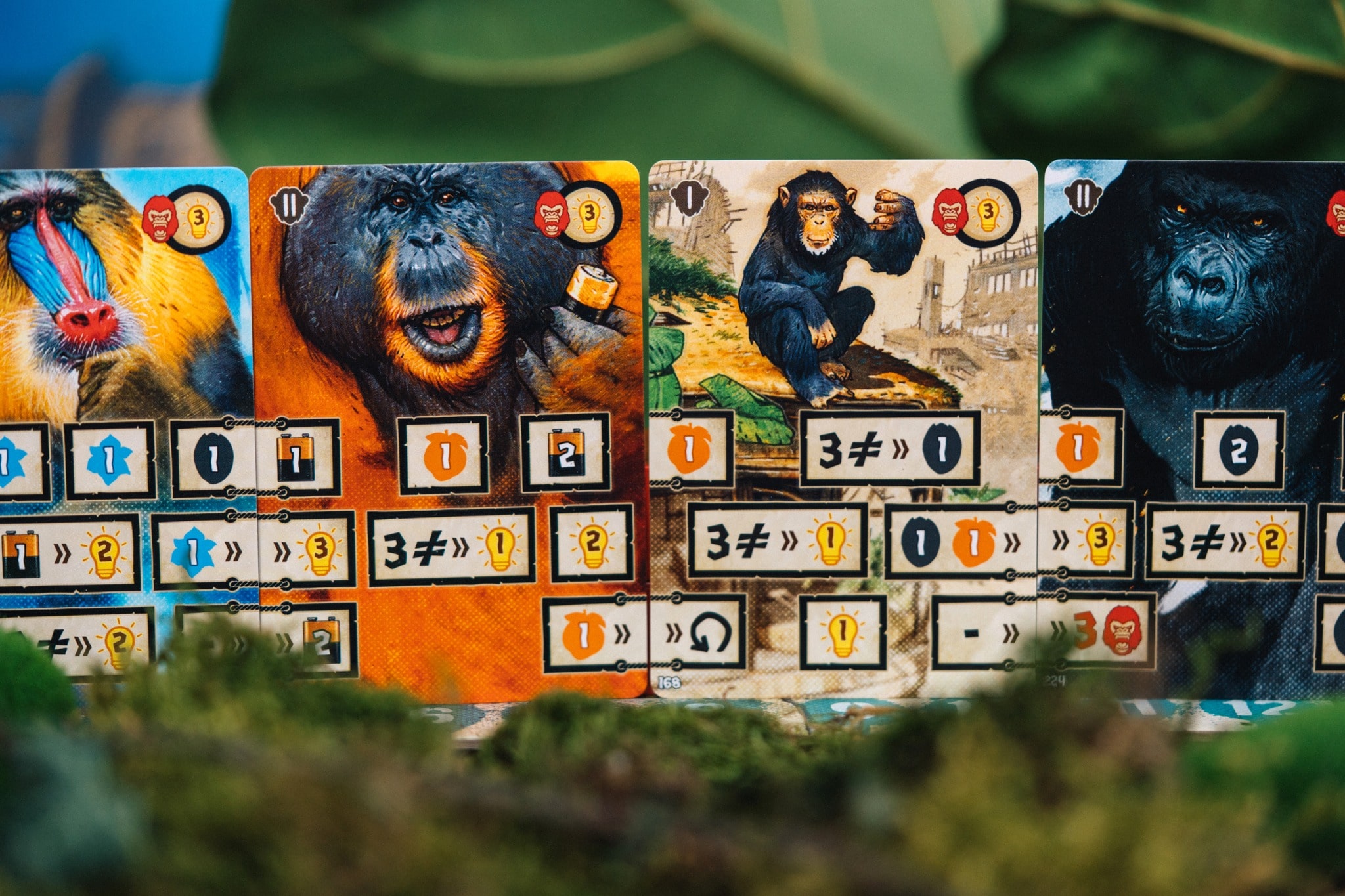
The three resources and attracting new primates
Another aspect that sets After Us apart from most deckbuilding games is that there isn’t just one resource for buying new cards. On the contrary, three of the four resources in the game allow you to attract new primates – that is, to buy new cards – and thus improve your deck.
Each primate species requires certain resources in order for you to attract them: You need flowers for mandrills, fruits for orangutans, grains for gorillas. Chimpanzees are a bit more flexible, they just want multiple resources of the same kind.
How you lay out and activate the cards at the beginning of a round determines what resources you will have available. First you collect resources with the first row. Then you activate the remaining two rows if necessary, with many boxes requiring resources to gain victory points or use special abilities.
The more resources you spend here, the fewer you have available to attract primates Therefore, think carefully about your strategy and which boxes you might want to skip in order to have enough resources left over to attract your desired primate species.
While After Us is a race to 80 victory points, even if one person has a points lead, don’t feel pressured to convert all your resources into victory points every turn.
This can use up so many resources in a pinch that there aren’t enough left to attract a new primate as well, which can make it even harder for you to catch up again in the long run.
Since you are always allowed to place newly acquired cards on top of your deck, attracting new primates is a good way to ensure you have stronger actions available next turn than just those from the starting cards.
So your goal should be to have at least three resources of the same type left each turn to pay for a new card. Ideally, you’ll even have six equal resources so you can pay for the even more powerful level 2 cards.
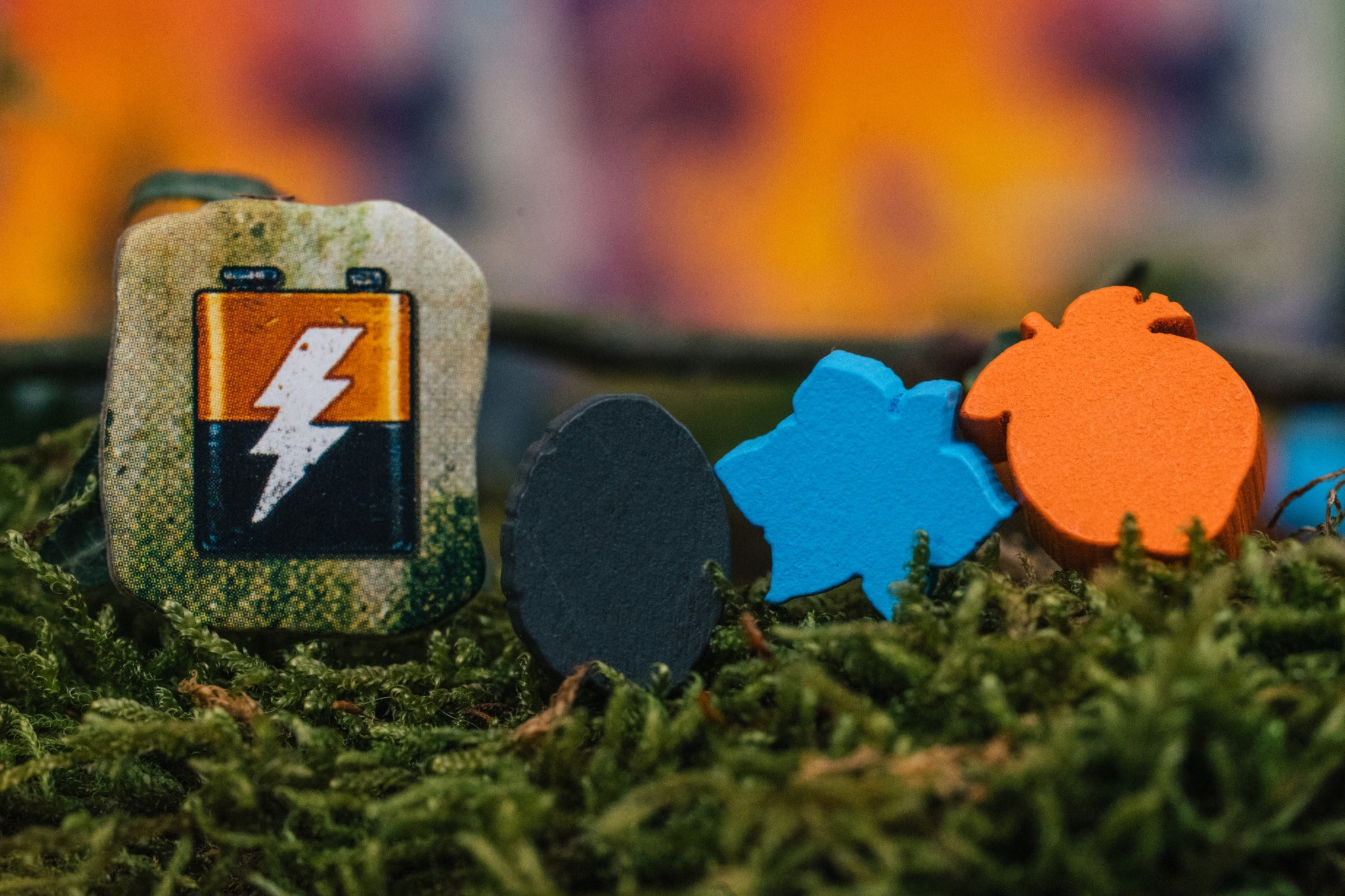
Table interaction
After Us can be played alone or with up to six people. On average, a game lasts less than an hour, but at the same time it gives you the opportunity to optimize your actions in each round.
The fact that such a game can be played in such a short time is only possible because a large part of it runs simultaneously. This also means that there is little interaction between the players. But that does not mean that they do not exist!
The object of this game is to reach 80 points or more as quickly as possible. Even if you can’t slow down the other players, you need to keep an eye on what they are doing.
Each person’s play style determines the pace of the game, and you need to pay attention to that so that you play at the right pace. If everyone else is taking their time to put together a strong deck, it may be worth it to go for a faster strategy.
Instead, if several people try to sprint to victory and focus only on victory points instead of strong cards, they might falter sooner or later. Then a strong deck can help overtake them in the home stretch after all.
Each round, each person also chooses an action marker that indicates the primate species they wish to recruit. In addition, each action marker shows a bonus, but the players to the right and left can also use it if they give two of the same resources in return.
Therefore, you should always pay attention to what you offer the competition. The goal of this phase is to copy the best bonus of the seatmates. It’s almost always worth spending the two resources on.
The bonus may earn you victory points, batteries, or wrath, or you may activate one of your boxes a second time, possibly giving you the missing resources to buy a more powerful level 2 card instead of just a level 1 card.
In a game like After Us, where optimizing turns is crucial since it is generally played in less than 10 turns, this is far from insignificant!
Of course, this is all a rather subtle kind of interaction. There is no anger mechanism. Instead, it is a matter of “reading the room” and adapting and optimizing one’s own strategy accordingly.
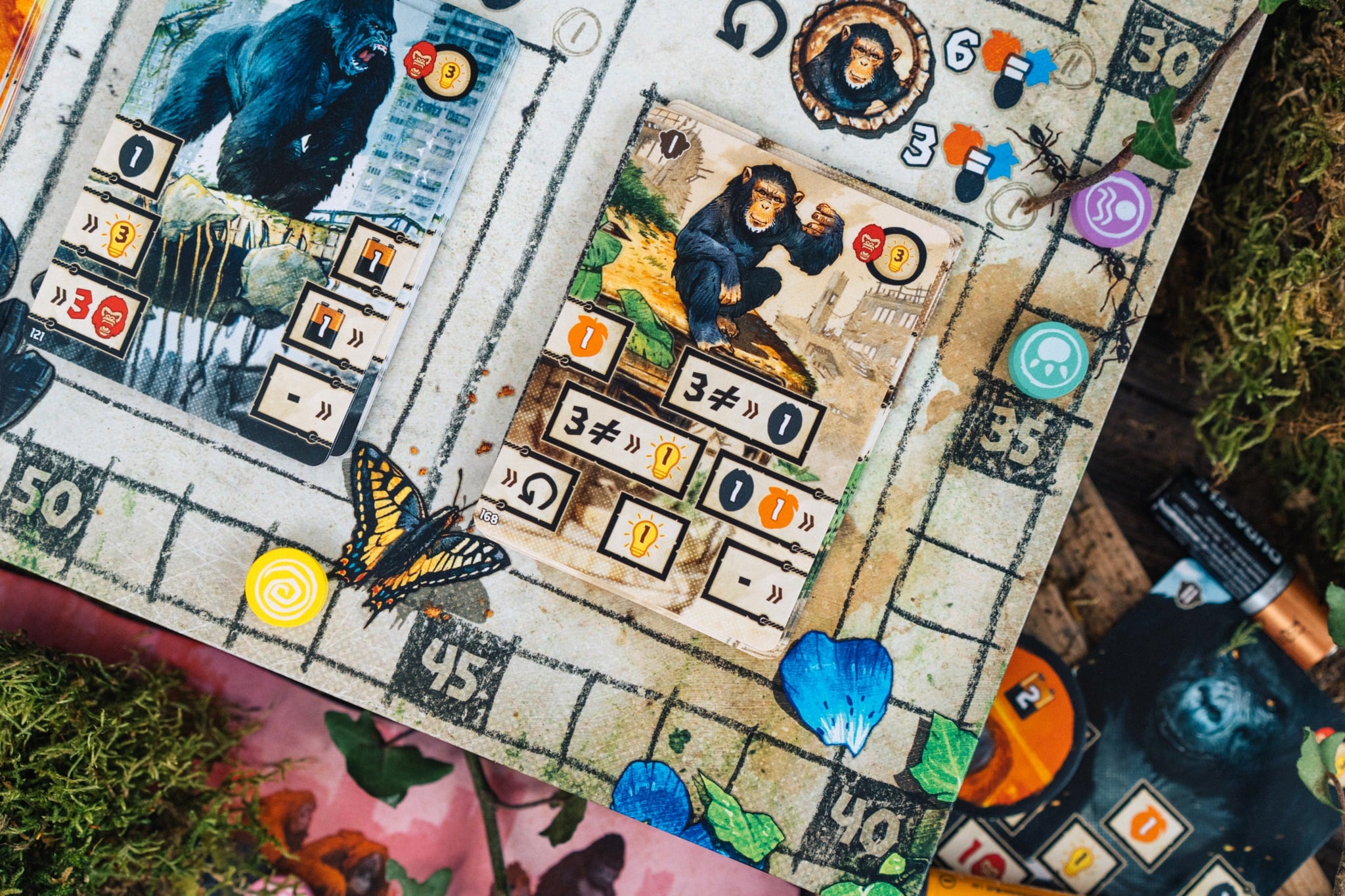
The reduction of the deck
Like many deck-building games, After Us has a mechanism that lets you permanently remove unwanted cards from your deck – especially your starting cards.
This is often a good way to draw several good cards in the same round. When you remove your starting cards (the cute tamarinds aren’t as productive, unfortunately), you give more space to the stronger cards you bought during the game.
After Us adds another layer to this decision, as each starter card provides a resource the moment it is removed.
This may not seem like much at first glance, but this bonus sometimes gives you the option to reactivate a crucial box, or allows you to attract a level 2 primate instead of a level 1 primate.
As for the primates you recruit during the game: removing them will earn you victory points. This could prove useful in the final stage of the game. Unlike other games in the genre, After Us doesn’t give you points for cards in your deck at the end of the game.
However, you can win without removing cards! First, because some cards have abilities that trigger when you have three or more primate species in your draw. Since the tamarinds only appear on the starting cards, it is easier to trigger these abilities while there are still tamarinds in your deck.
Second, some abilities give you points or resources depending on how many tamarinds are currently in your display. So for these cards, it can be interesting to keep a sufficient number of starting cards to make the most of these abilities.
So removing cards or not removing cards, or the number of cards you should remove, is a very important decision in a game of After Us. If your strategy is based on Tamarinds, you’ll have fewer resources to spend on improving your deck – giving you more resources to convert directly into victory points.
During the numerous testing sessions, both strategies were often evident, and some winners* chose to keep most of their starting cards.
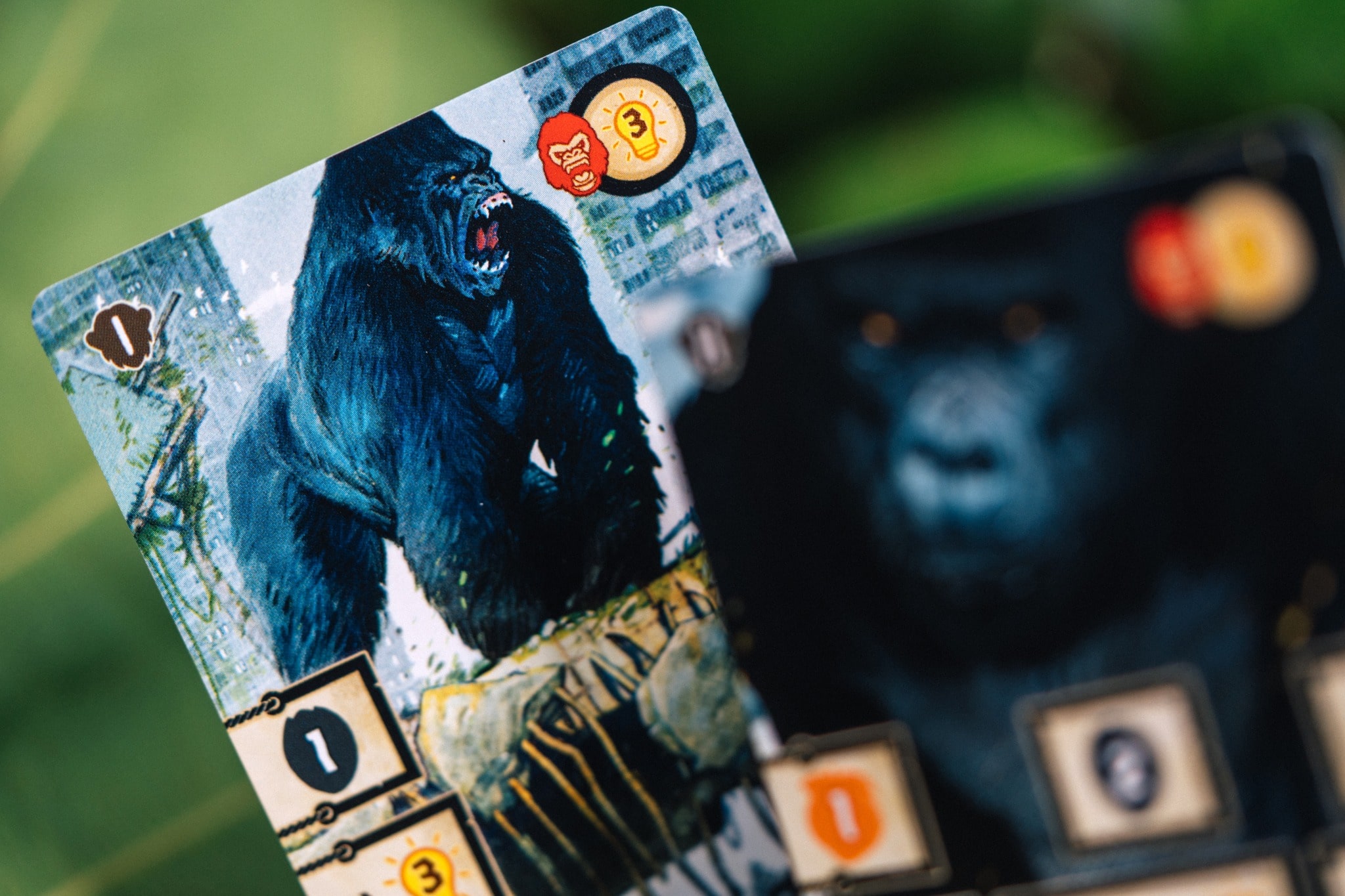
Batteries and objects
As the fifth and final point in this game guide, let’s turn to the objects left behind by humanity. Unlike the other three resource types in the game, batteries, which you get mainly through orangutans, are not much help in attracting new primates, but they can activate objects. In each game you use 3 of the 7 available objects (you choose them at the beginning of the game, either randomly or by preference). So there are over 210 possible combinations of which objects are in the game together. They change the options you have during a game.
The boombox, cell phone and minibar aren’t the most impressive, but they make your life easier. Because they allow you to play through your deck faster or swap out cards and resources, they give you flexibility and ultimately control over how your game evolves.
The moped is far more expensive, but recruits an additional primate. In a game where you normally only get one new card per turn, the Moped greatly speeds up the expansion of your deck. This also changes the way you spend resources – whether you use them up immediately or keep them for recruitment.
With the game console, you may return a card from your discard to your deck. This way you can easily optimize your next round. Of course, it helps to quickly get the most out of a card, but it can also facilitate card combinations during the next turn.
Finally, the pinball offers you the possibility to play a fifth card in a round. This increases the number of combinations of which boxes you can activate. The cost is high, but fair, because with an efficient and well-built deck, this item can provide unexpected twists where you can pick up 25 or more victory points in one turn!
Of course, using these objects is not free: they require two to nine batteries, which means that you’ll have to generate a corresponding number of batteries with your horde – in other words, if I want to use a lot of batteries, you’ll have to attract orangutans and thus collect more batteries than the competition. This is a strategic decision you make for your deck, and it must be based on whether the pace of the game allows for this path.
We hope this game guide has given you some interesting insights and you now feel well prepared for your first game of After Us. We wish you a lot of fun and of course success!
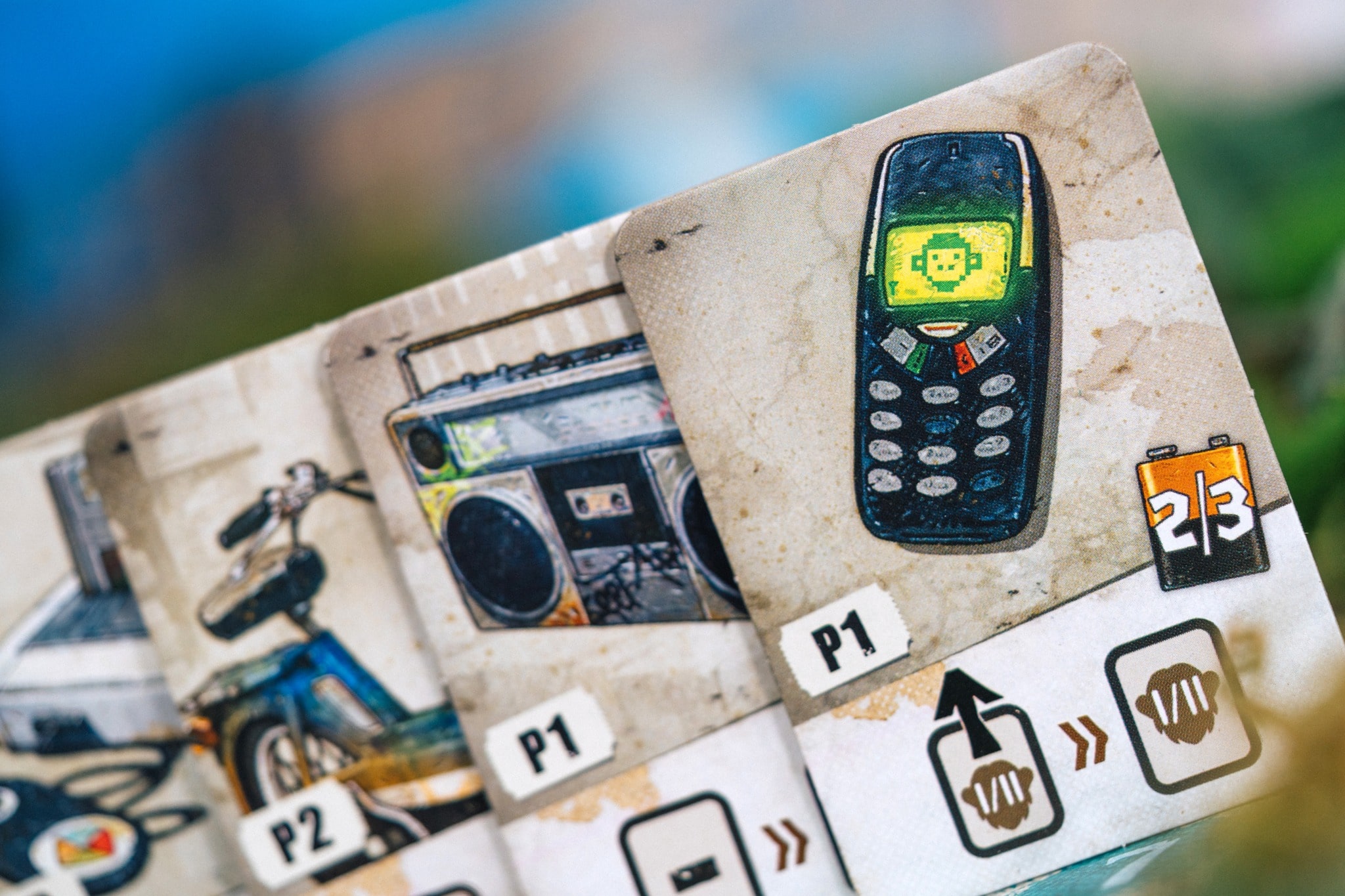
After Us
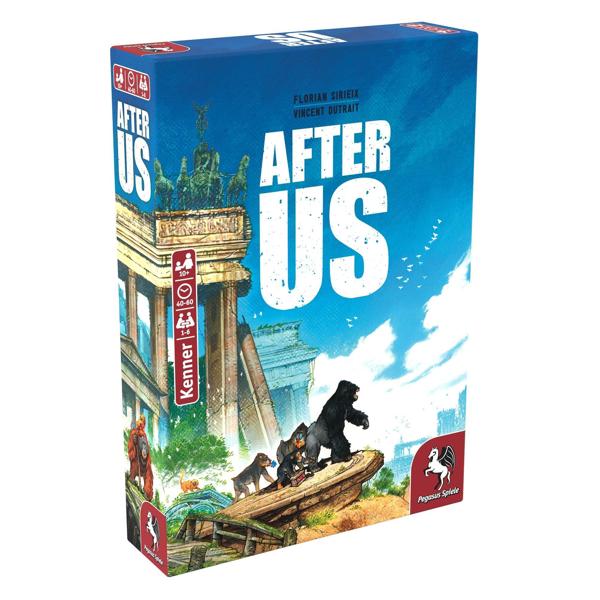
-
- Number of people: 1 to 6
-
- Age: from 10 years
-
- Game duration: 40 to 60 minutes
-
- Size: 28cm x 30cm x 6cm
-
- Weight: 2100 g
- Type: Basic game
Find out exciting news and more about our products every week at varia.org/blog !

